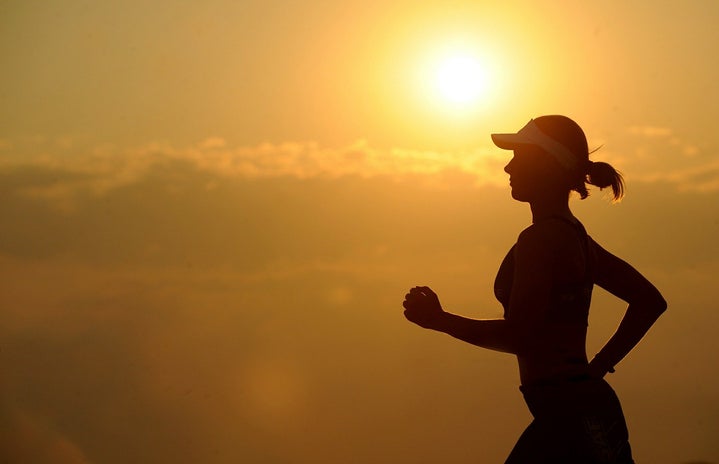What’s viral on TikTok can vary, but for myself and many other users of the platform, the so-called ‘Running TikTok’ trend has turned the app into a health and wellness frenzy. The trend involves people, ranging from amateurs to professionals, posting videos of themselves on their runs, along with promoting products such as the best running vests – who knew that was so important? I am not immune from this sudden interest in running and everything that comes with it, which begs the question: is ‘Running TikTok’ helpful, or is it just hype?
From a novice’s perspective, the TikTok version of the running world can look impressive: aesthetically pleasing trainers and matching sets that could make anyone look good are just a few of the things that draw people in (myself included). As cool as this seems, these items are costly, with Hoka trainers – the current influencer favourite – starting at £130. Anyone drawn into this for all but a split second can, unfortunately, acquire a load of items that eventually just end up collecting dust thanks to constant TikTok promotion. Running influencers also advertise products such as green drinks and powders which retail at extortionate amounts, yet fail to impress health professionals. It questions whether the running trend remains solely related to the sport, or whether it has turned into a commercialised business opportunity for copious amounts of influencers and brands, willing to exploit people into buying whatever seems necessary.
As great as this trend can be for both your physical and mental health, there is no denying that there are problems surrounding it which don’t just relate to the material side of it. It is very common to scroll onto a video of one of these ‘It’ runners, vlogging their casual 30-kilometre morning run, or another who is flying through their half-marathon training. Watching these during a rut of not being able to perform how you want to, or after stopping your 5-kilometre run minutes in because you are not in the right headspace, can make the entire trend seem out of reach. Whilst this can be one of the negative sides of the trend, I find that this is where the foundation of the entire trend (girls posting videos to help inspire themselves and others) proves its importance.
Aside from it dominating my ‘FYP’, who I follow has changed from having nothing to do with running, to having everything to do with it. It’s tricky to decide whether this is entirely a good thing. The runners I follow or have come across have inspired me in many different ways- whether that be running that kilometre further or getting started with interval training. However, there is also a downside to this as the constant exposure to this healthy lifestyle can prove harmful, enabling you to fall into the habit of comparing yourself to one of these amazingly proactive influencers or even strangers running past you. I’ve had concerns about my pace being too slow, or whether I’m going backwards because I stopped to walk during a shorter distance run. This is where this community is incredibly helpful, finding runners at a similar ability to you whether that’s virtually or in an in-person group such as ‘These Girls Run’, a casual running club that hosts weekly runs in many UK cities.
‘Running TikTok’ has ultimately been such a great addition to the app for me and presumably many others, however, I think the over-glamourised, hyped-up version of this trend has had enough time in the spotlight. All you need is a half-decent pair of trainers and the motivation to get yourself out there to get going, whether that’s a run around your local park by yourself or a longer run across the city with a group.


